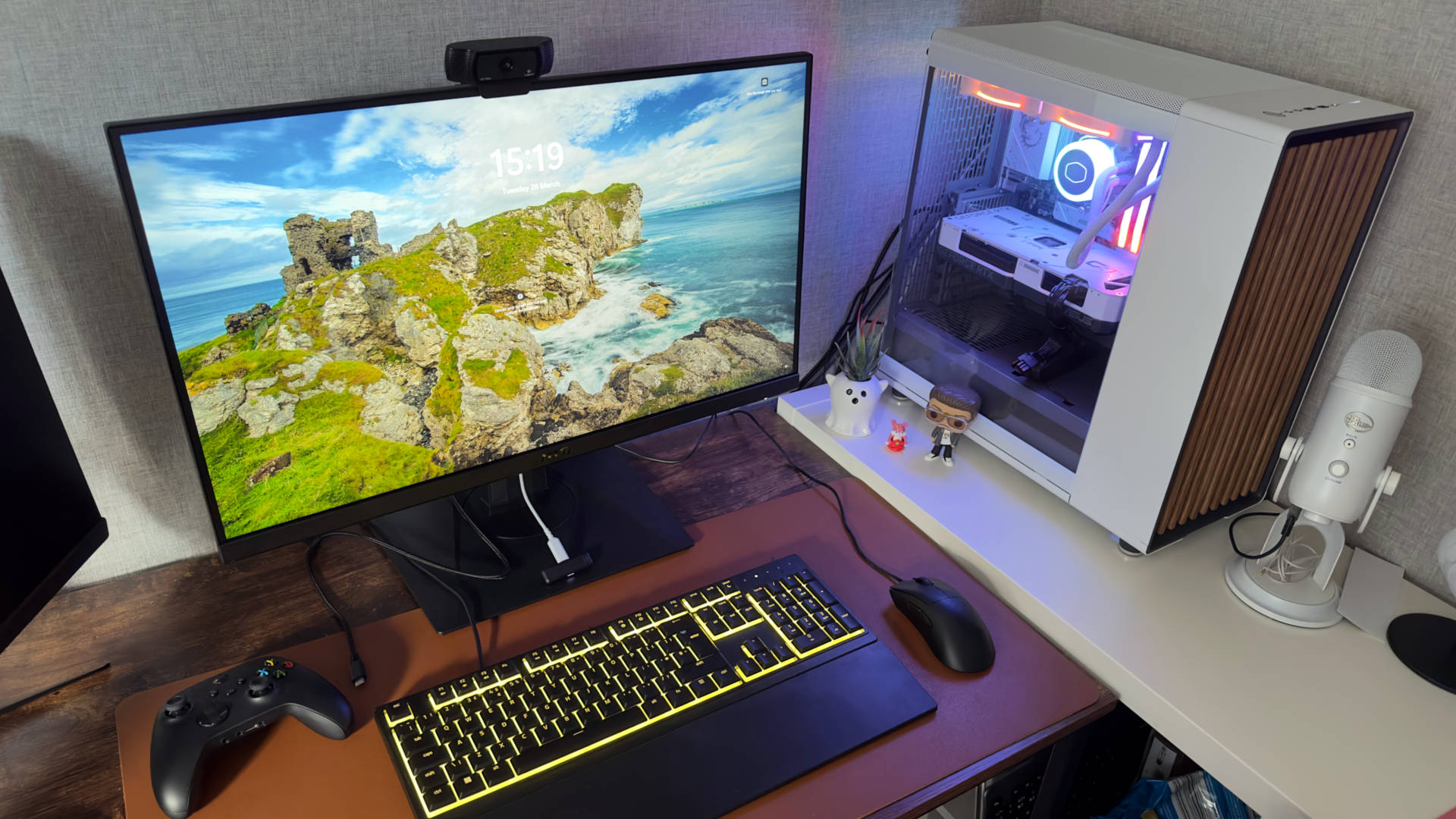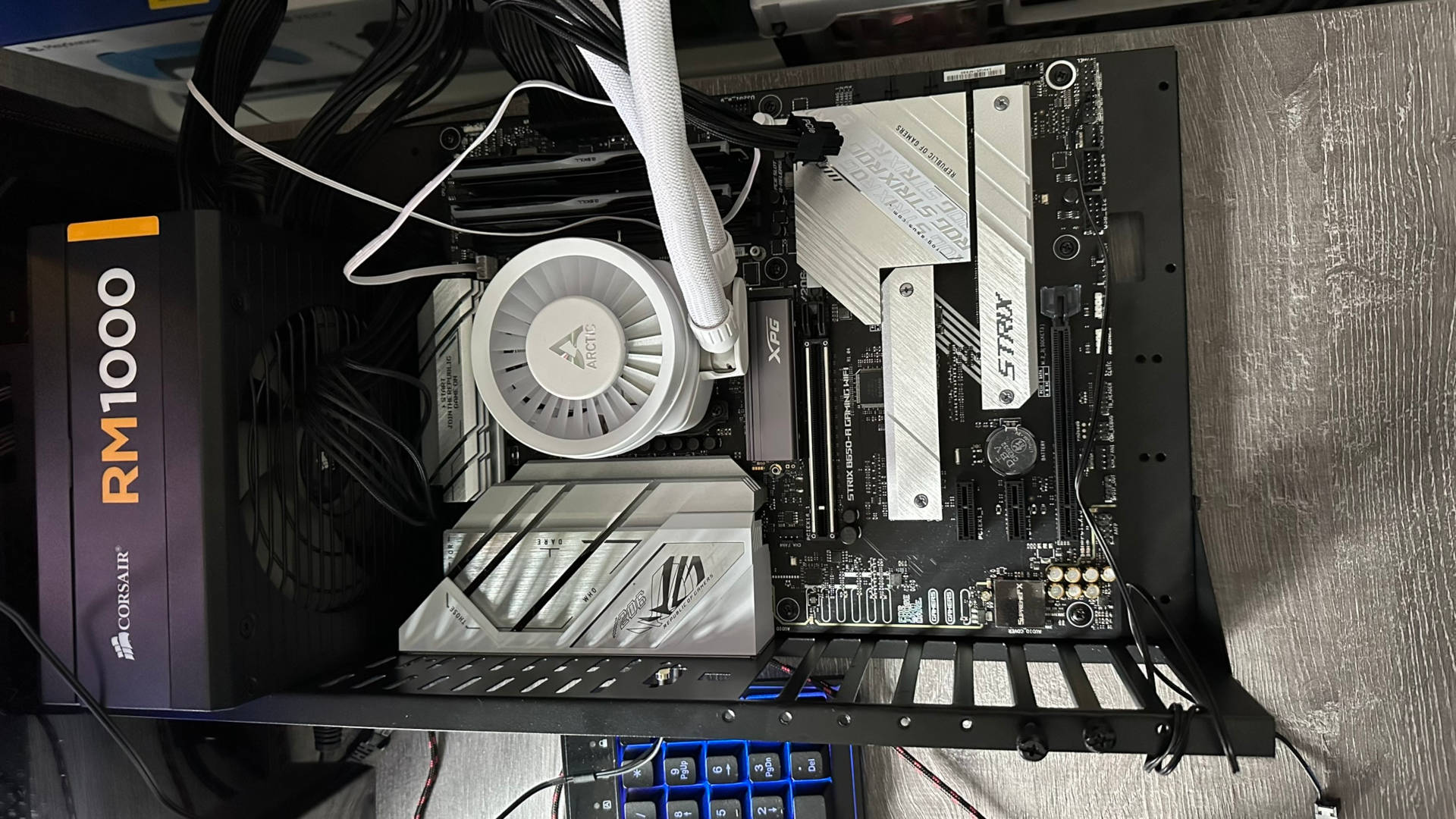Having built 500+ PCs in my time I can say this with confidence: Building is fun and rewarding but ironing out those inevitable BIOS, CPU, memory kinks is unbearable
AMD, Intel—doesn't matter which one you go with, there's always something to trip you up.


This month I've been benchmarking: Endless benchmarking. Hours upon hours, run after run. All in the name of seeing exactly how one game performs on a range of different PCs. And I'd do it all again in a flash, as I adore benchmarking. Yes, I am a little odd.
It's been a busy old month at Chateau Evanson, mostly down to the inordinate amount of time spent testing the performance of Dragon's Dogma 2 and how its quality settings affect things. That all started on my old primary PC, with a Core i7 9700K, but half way through, I did a full system upgrade to an Intel Z790 setup. New CPU, RAM, graphics card, coolers, SSDs, PSU. The lot, bar the case, which will eventually get replaced at some point as the cooler doesn't quite fit properly.
The whole build went very smoothly and the PC booted absolutely fine with the DDR5 set to its 6400 XMP profile, all of the SSDs worked exactly as expected, and cable management was remarkably stress-free. Heck, it didn't even take all that long to get Windows and the gamut of usual applications installed and configured.
On the other hand, I started to get headaches over the amount of BIOS/UEFI fiddling required to get the right balance between performance, power consumption, temperatures, and fan noise. Use the motherboard's default settings and the CPU just sucks up enough power to melt the polar caps; drop the limits down to Intel's values and you get top notch performance for a while before it throttles back. I think I have it all figured out now but it was a handy reminder that no matter how experienced you are in doing something, you can still come across something new to trip you up.
I've honestly no idea how many full PCs I've built over the years but if I had to hazard a guess as to the lowest possible number, it's in the order of five hundred. Some of those were professional workstation builds, plenty were simple office/school machines, and the rest were all bespoke configurations for individual people. The cheapest would have been £500 or so, the most expensive 20 times that figure.
In terms of AMD/Intel split, I'd say probably it's a 3:2 ratio but the last AMD systems I built were about 8 years ago, involving the FM2+ socket and the cheap-but-cheerful Athlon X4 845, that was ideal for basic home PCs. Nothing about them stood out as being problematic and they were easy to set up and configure as anything.
No matter how experienced you are in doing something, you can still come across something new to trip you up
So even though it had been a while since I had fully built an AMD system, I didn't anticipate any issues with building two AM5-based PCs this month, one as a birthday present for my partner, and the other being a benchmarking platform. For the former, I went with the Ryzen 7 7700X, an MSI B650M Gaming Plus motherboard, 32GB of DDR5-5600, and a GeForce RTX 4070. Lots of lovely white and silver colours, with a discrete smattering of RGB to make it all sparkle.
I'd like to say that it all went smoothly but it was anything but plain sailing. Some of the issues were my own fault, such as getting a 280 mm AIO cooler because the website for the case (a Fractal Design North in white) said it could fit two 140 mm fans in the top. Fan, yes. Radiator, no. Face meet palm. But other problems were down to peculiarities of the hardware itself.
The biggest gaming news, reviews and hardware deals
Keep up to date with the most important stories and the best deals, as picked by the PC Gamer team.
First issue: It would take anywhere up to 10 minutes to reach the point where Windows would start to load. The traffic light warning LEDs on the motherboard told me that it was a CPU problem. No, wait, it was the memory. Nope, it was the storage drive.

And all of this was using the default settings in the UEFI—no overclocking, no tweaking, just the standard configuration. Eventually I got it all solved, through a combination of poking around in the motherboard's settings, but then it came time to enable EXPO (AMD's equivalent to XMP).
It didn't like that at all. Not. One. Bit.
Cue second mistake of mine. Although I had checked the memory QVL (essentially a list of RAM kits the motherboard vendor has tested on its products) to ensure the RAM I'd bought was fine to use, what I hadn't checked was to see if MSI had released any BIOS updates. I'd assumed that since the 7700X was launched back in 2022 and the motherboard model was a lot newer, all would be fine.
Yes, it was BIOS flashing time. That solved the EXPO problem but not the inordinately long boot time, or a weird issue when the PC wouldn't cold boot if you'd shutdown Windows before and would only behave if the PSU was switched off and back on again. At one point I genuinely felt like I had totally lost the plot, but after fully resetting the BIOS and trying everything again twice, it finally behaved.
It looks great, runs well, and it's a cracking little PC. But hell's bells, what a journey to get there.
It works perfectly now and boots to Windows in less than 20 seconds. It looks great, runs well, and it's a cracking little PC. But hell's bells, what a journey to get there. But I was happy to admit that it was my fault and despite spending time checking out all of the potential pitfalls of AM5, I simply felt that if I'd prepared myself better, none of this would have happened.
And then it came time to build the other AM5 system, an open-case testbench that would be used to run multiple different AMD CPUs and various graphics cards, for articles, reviews, and whatnot. This time the build went flawlessly, apart from the open case but hey, it cost me £25 so I won't complain. It even booted with DDR5-6400 and EXPO first time and the initial test runs showed just how great AMD's hardware is. Fast, powerful, and gentle on power.
That was until it came time to swap the graphics card for another one. Cue endless black screens, wonky resolutions, missing drivers in Device Manager despite the fact they'd just been installed. And no, it wasn't a 'me' thing this time, as I was doing the same on an AM4 testbench, with a Ryzen 5 5600X, and that was rock solid. I can fling cards in and out of that all the time and it just works.

Don't think I'm just dunking on AMD and praising Intel for the sake of it. The latter's graphics cards are an exercise in frustration management, and if the sole Arc card I've been using recently is any indication as to what they're all like, then Intel has got its work cut out in making them reach the gold standard of GeForce and Radeon.
Not that either of those are without flaws. In the case of Nvidia's offerings, if it's one of current RTX 40-series cards that use the 12VHPWR connector, you end up with a horrible mess of cables and adapters, unless you have a PSU that comes with a dedicated 12VHPWR cable. And as for Radeon cards, well the hardware is lovely, super powerful and quick, but the software side of things is somewhat annoying, with drivers playing guessing games as to whether they've installed or not.
With Geforce cards, I can install one set of drivers, swap cards over, and it all works fine after a single reboot. Can't say it's been like with Radeons, and don't get me started on what it's been like swapping AMD CPUs around.

Best CPU for gaming: The top chips from Intel and AMD.
Best gaming motherboard: The right boards.
Best graphics card: Your perfect pixel-pusher awaits.
Best SSD for gaming: Get into the game ahead of the rest.
But at least I can slap a cheap cooler on a Ryzen 7000-series or 8000-series chip, and never have to worry about the chip bouncing off thermal limits, unlike my new 14700KF which took hours of experimenting with to get right. AMD's power efficiency is well known, as is Intel's love of wattage, but I do wonder if the cutting edge fabrication and chiplet design inside Ryzen CPUs doesn't help matters when it comes to set up simplicity and component compatibility.
Anyway, I digress. Today's components and software are vastly better than they used to be a few decades ago, and building PCs is generally quite straightforward—right up until it's not. Then it's like the 1990s all over again, having to mess about with BIOS/UEFI settings and drivers.
But if you are planning on building a new gaming PC in the coming months, just remember to read everything properly before you hand over your cash and check for updates before you start delving into the joy that's PC building. Especially the radiator sizes that the PC case can take!

Nick, gaming, and computers all first met in 1981, with the love affair starting on a Sinclair ZX81 in kit form and a book on ZX Basic. He ended up becoming a physics and IT teacher, but by the late 1990s decided it was time to cut his teeth writing for a long defunct UK tech site. He went on to do the same at Madonion, helping to write the help files for 3DMark and PCMark. After a short stint working at Beyond3D.com, Nick joined Futuremark (MadOnion rebranded) full-time, as editor-in-chief for its gaming and hardware section, YouGamers. After the site shutdown, he became an engineering and computing lecturer for many years, but missed the writing bug. Cue four years at TechSpot.com and over 100 long articles on anything and everything. He freely admits to being far too obsessed with GPUs and open world grindy RPGs, but who isn't these days?

